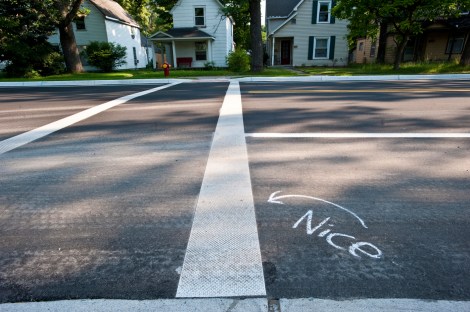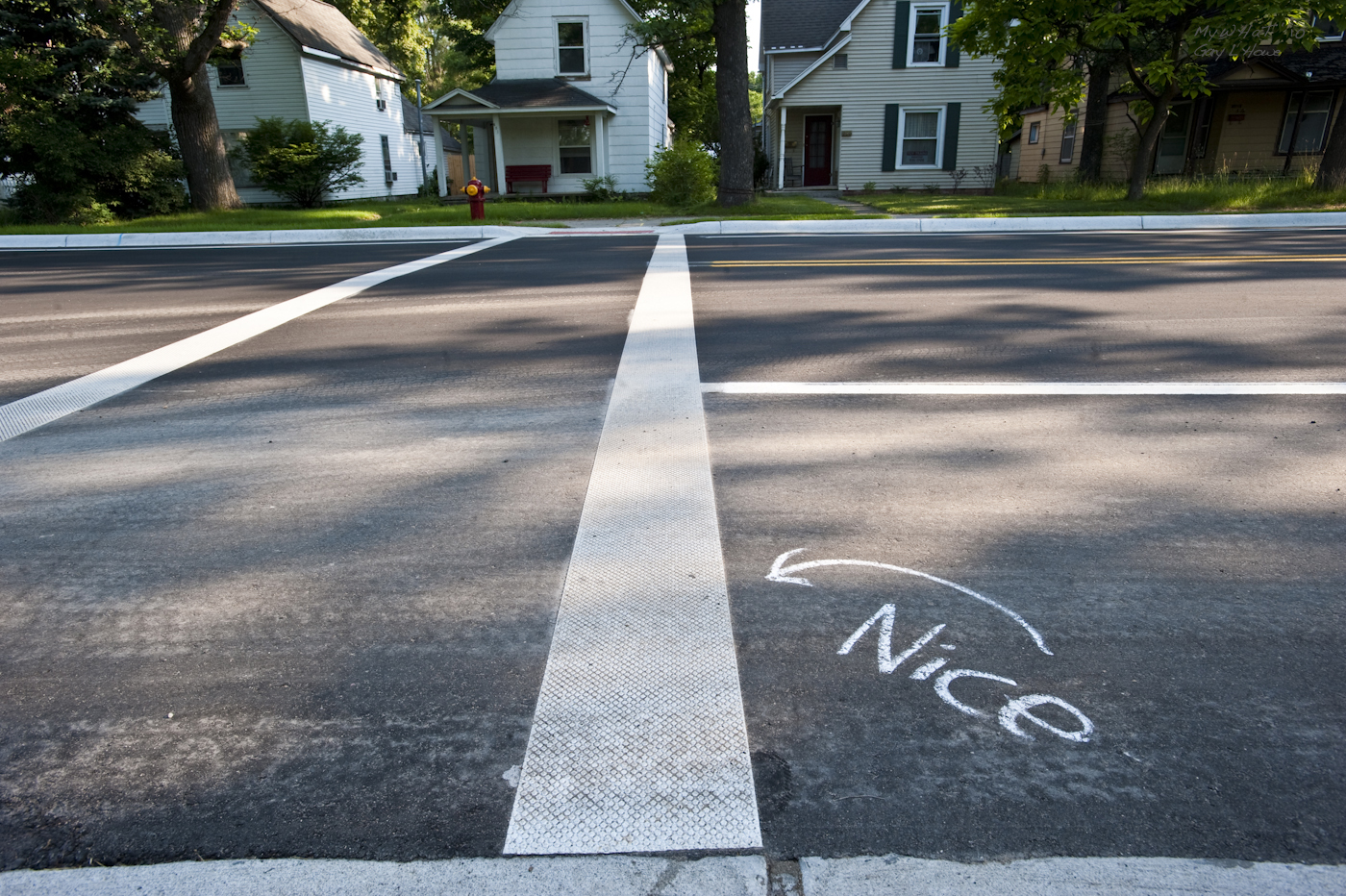Ever skitter across a busy street, dodging cars, thinking, “Holy hell, this completely legal pedestrian activity sure would be easier with a little bit of helpful infrastructure”? Of course you have. Well, last week, Anthony Cardenas of Vallejo, Calif., did too, and then he took matters into his own hands.

“Fifty-two-year-old Anthony Cardenas was arrested Thursday morning in Vallejo and booked into Solano County Jail on suspicion of felony vandalism,” the San Francisco Chronicle reported on Friday. The vandalism in question: Painting a crosswalk in the street.
Apparently unsatisfied, the city threw even more resources at the problem. “State transportation workers painted over Cardenas’ alleged crosswalk later in the day. A police cadet had been posted at the intersection until then to keep pedestrians from using it.”
Cardenas is hardly the first civic infrastructure DIYer, let alone the first crosswalk-hacker. For years my friends in Oakland have whispered about the city staffer who took it upon himself to paint a crosswalk in his neighborhood. (He didn’t go to jail, but his employers did paint it back over.) And it turns out this kind of city hack is actually pretty common worldwide. From New Haven to Sao Paolo, folks have been making their own crosswalks for years, with no help — and often a lot of hostility — from local officials.
A man was arrested in 2008 and charged with “criminal mischief” for pulling a Cardenas in his Muncie, Ind., neighborhood. He had lobbied his city for a crosswalk near his home for more than a year.
Painting city property without permission may technically be criminal, but these efforts seem far less mischievous than they do compassionate. In the Muncie guy’s case, the city explicitly refused to paint crosswalks anywhere that wasn’t near a school, as a matter of policy.
Under California law, unless stated otherwise, anywhere that the sidewalk ends and meets the street is a de facto crosswalk, with pedestrian right-of-way. So Cardenas’s criminal offense looks particularly dubious.
Municipalities argue that each crosswalk requires extensive traffic study. Some even argue that unpainted crosswalks may actually be safer, as they force drivers to slow down and pay attention.
But crosswalks also give walkers confidence to actually get where they need to go. And in at least one instance, DIY efforts spurred a city to do the right thing: Baltimore officials actually came back later just to straighten out the DIY paint lines.
Here’s hoping more cities catch on. Meanwhile, hope for the best for poor Anthony Cardenas, and everyone else who has the courage to put a brush to asphalt.



